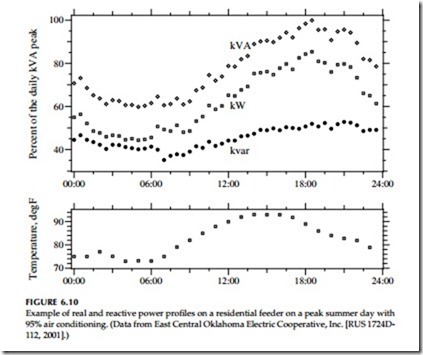Switched Banks
Switched banks provide benefits under the following situations:
• More loss reduction — As the reactive loading on the circuit changes, we reduce losses by switching banks on and off to track these changes.
• Voltage limits — If optimally applied banks under the average load- ing scenario cause excessive voltage under light load, then use switched banks.
In addition, automated capacitors — those with communications — have the flexibility to also use distribution vars for transmission support.
Fixed banks are relatively easy to site and size optimally. Switched banks are more difficult. Optimally sizing capacitors, placing them, and deciding when to switch them are difficult tasks. Several software packages are avail- able that can optimize this solution. This is an intensely studied area, and technical literature documents several approaches (among these Carlisle and El-Keib, 2000; Grainger and Civanlar, 1985; Shyh, 2000).
To place switched capacitors using the 1/2-kvar method, again place the banks at the location where the line kvar equals half the bank rating. But instead of using the average reactive load profile (the rule for fixed banks), use the average reactive flow during the time the capacitor is on. With time- switched banks and information on load profiles (or typical load profiles),
we can pick the on time and the off time and determine the proper sizing based on the average reactive flow between the on and off times. Or, we can place a bank and pick the on and off times such that the average reactive line flow while the bank is switched on equals half of the bank rating. In these cases, we have specified the size and either the placement or switching time. To more generally optimize — including sizing, placement, number of banks, and switching time — we must use a computer, which iterates to find a solution [see Lee and Grainger (1981) for one example].
Combinations of fixed and switched banks are more difficult. The fol- lowing approach is not optimal but gives reasonable results. Apply fixed banks to the circuit with the 1/2-kvar rule based on the light-load case. Check voltages. If there are undervoltages, increase the size of capacitors, use more capacitor banks, or add regulators. Now, look for locations suit- able for switched banks. Again, use the average reactive line flows for the time when the capacitor is on (with the already-placed fixed capacitors in the circuit model). When applying switched capacitors, check the light- load case for possible overvoltages, and check the peak-load case for under- voltages.
